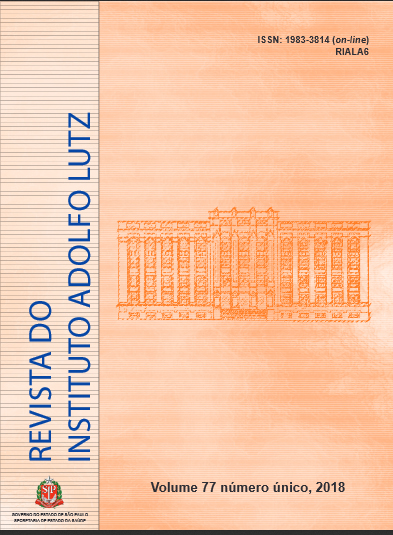Resumen
Implementation of a geospatial surveillance and response system data resource for vector borne disease in the Americas (GeoHealth) will be tested using NASA satellite data, geographic information systems and ecological niche modeling to characterize the environmental suitability and potential for spread of endemic and epizootic vector borne diseases. The initial focus is on developing prototype geospatial models for visceral leishmaniasis, an expanding endemic disease in Latin America, and geospatial models for dengue and other Aedes aegypti borne arboviruses (zika, chikungunya), emerging arboviruses with potential for epizootic spread from Latin America and the Caribbean and establishment in North America. Geospatial surveillance and response system open resource data bases and models will be made available, with training courses, to other investigators interested in mapping and modeling other vector borne diseases in the western hemisphere and contributing brokered data to an expanding GeoHealth data resource as part of the NASA AmeriGEOSS initiative.
Citas
1. Tourre YM, Lacaux JP, Vignolles C, Lafaye M. Climate impacts on environmental risks evaluated from space: a conceptual approach to the case of Rift Valley Fever in Senegal. Glob Health Action. 2009;2:2053. http://dx.doi.org/10.3402/gha.v2i0.2053
2. Utzinger J, Rinaldi L, Malone JB, Krauth SJ, Kristensen TK, Cringoli G et al. Geospatial Health: the first five years. Geospat Health. 2011;6(1):137–54. http://dx.doi.org/10.4081/gh.2011.166
3. Machault V, Yébakima A, Etienne M, Vignolles C, Palany P, Tourre Y. Mapping entomological dengue risk levels in Martinique using high-resolution remotesensing environmental data. ISPRS Int J Geo-Inf. 2014;3(4):1352–71. https://dx.doi.org/10.3390/ijgi3041352
4. Malone JB, Tourre YM, Faruque F, Luvall JC, Bergquist R. Toward establishment of GeoHealth, an open data portal resource on health mapping and modelling based on Earth observations by remote sensing. Geospat Health. 2014;8(3):S599–602. https://doi.org/10.4081/gh.2014.291
5. Luvall JC. The power of the pixel - A thermodynamic paradigm for studying disease vector’s habitats & life cycles using NASA’s Remote sensing data: GNOSIS, the 8th International Symposium on Geospatial Health. New Orleans; 2014. 1–1
6. De Roeck E, Van Coillie F, De Wulf R, Soenen K, Charlier J, Vercruysse J et al. Fine-scale mapping of vector habitats using very high resolution satellite imagery: A liver fluke case-study. Geospat Health. 2014;8(3):S671–83. https://doi.org/10.4081/gh.2014.296
7. Capolupo A, Pindozzi S, Okello C, Boccia L. Indirect field technology for detecting areas object of illegal spills harmful to human health: application of drones, photogrammetry and hydrological models. Geospat Health. 2014;8(3):S699–707. https://doi.org/10.4081/gh.2014.298
8. Phillips SJ, Anderson RP, Schapire RE. Maximum entropy modeling of species geographic distributions. Ecol Modell. 2006;190:231–59. https://doi.org/10.1016/j.ecolmodel.2005.03.026
9. Mischler P, Kearney M, McCarroll JC, Scholte RGC, Vounatsou P, Malone JB. Environmental and socio-economic risk modelling for Chagas disease in Bolivia. Geospat Health. 2012;6(3):S59-66. https://doi.org/10.4081/gh.2012.123
10. Nieto P, Malone JB, Bavia ME. Ecological niche modeling for visceral leishmaniasis in the state of Bahia, Brazil, using genetic algorithm for ruleset prediction and a growing degree day-water budget model analysis. Geospat Health. 2006;115–26. https://doi.org/10.4081/gh.2006.286
11. Guzman MG, Halstead SB, Artsob H, Buchy P, Farrar J, Gubler DJ et al. Dengue: a continuing global threat. Nat Rev Microbiol. 2010;8(12 Suppl):S7–16. https://doi.org/10.1038/nrmicro2460
12. Rey JR. Dengue in Florida (USA). Insects. 2014;5(4):991–1000. https://doi.org/10.3390/insects5040991
13. Christofferson RC, Mores CN, Wearing HJ. Characterizing the likelihood of dengue emergence and detection in naïve populations. Parasit Vectors. 2014;7:282. https://doi.org/10.1186/1756-3305-7-282

Esta obra está bajo una licencia internacional Creative Commons Atribución 4.0.
Derechos de autor 2018 John B Malone, Prixia del Mar Nieto, Jeffrey C Luvall, Jennifer C McCarroll, Rebecca C Christoferrson, Seung-Jong Park, Moara Martins, Elivelton S Fonseca, Maria E Bavia, Ryan H Avery, Cassan N Pulaski, Raul B Guimaraes
